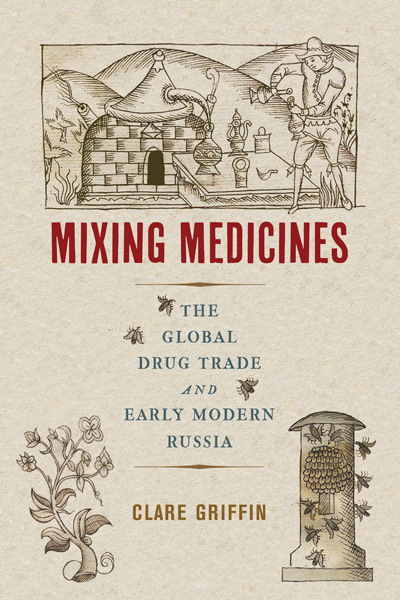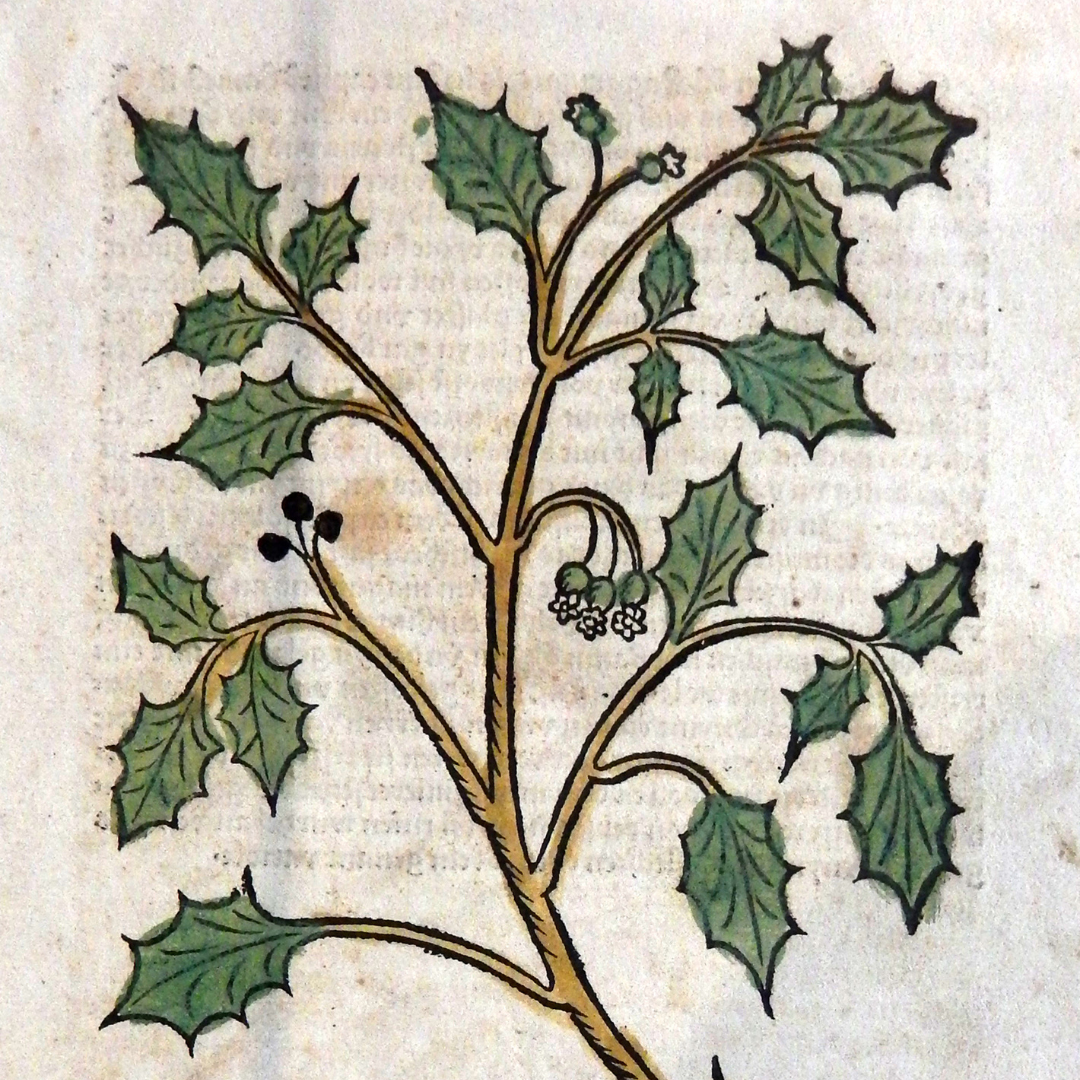Materia medica and the global drug trade in early modern Russia

Published by: McGill-Queen’s University Press

In Mixing Medicines, Claire Griffin makes a welcome contribution to the history of the early modern Global Drug trade. As she rightly points out, there is a growing literature on the subject, and it has been approached from a number of different areas, including the Americas, China, India and the Islamic Empires. Yet there has been little discussion of Russia’s role and contribution despite its influence and role as an imperial power in the early modern era.
In the work, Griffin utilizes the wealth of archival sources related to the Apothecary Chancery, a government institution that oversaw and regulated official medical practice in the Russian Empire in the 16th and 17th centuries – and that was later divided into an “Old” and a “New” Pharmacy. Thus, the Apothecary Chancery (and its later iterations), which was overseen by foreign physicians brought to Russia mainly from Germany and England, held a variety of documents related to its responsibilities: documents listing the materia medica and prescriptions (including imports and local substances) supplied to the Russian court, the Czar’s family, and the Russian army; documents related to the regulation of Muscovite markets in which medicinal drugs were sold; and documents regarding its official procedures for the official licensing of apothecaries. The Apothecary Chancery archive also includes documentation regarding unofficial medical and pharmaceutical practice as well, including cases investigated by the Chancery of folk medicine and magical practices as well as the influence of the Eastern Orthodox church and its practices. In her exploration of these sources, Griffin argues for the Russian Empire’s global links when it came to the drug trade, and thus its role in early modern globalization, thus making a case for Muscovite global science.
Mixing medicines […] gives important insight into practices of early modern pharmacy, the use of early pharmaceuticals, and the global drug trade as well as drug licensing, with particularly interesting points regarding the Russian Orthodox Church and its prohibition on the use of flesh-based medicine
Indeed, Griffin argues that drugs, and particularly those derived from plants, were at the heart of Russian medicine and represented a worldwide trade in that they came from virtually every continent including, especially starting in the 17th century, the Americas. Griffin also points to the prevalence of fears of poisons and poisoning among early herbal remedies. In addition to her coverage of plant-based medicines, Griffin examines chemical remedies included in the Chancery documentation, pointing to various mineral- or chemical-based remedies that resulted, she argues, from the rise of chemical remedies influenced by Paracelsian medicine and the foreign doctors who promoted it in Russia. In addition to botanical and chemical medicines, those using flesh, whether it be of mummies or of snakes, were also part of the Russian repertoire of drugs, though Griffin points out the ways in which the Russian Orthodox Church opposed their use, given the theological strictures against the dismemberment of corpses. While these medicines were forbidden throughout most of the 17th century, thanks to the reign of Peter the Great and growing foreign influence, these medicines gradually attained acceptance. Finally, Griffin examines the textual practices of early modern Russian documentation, the texts that were produced, and how practices changed with the emergence of book production in the early modern era. In Russia, the printing press was not utilized until later than in Europe, and with it came a host of new regulations, legislation, and licensing as well as investigations of medicines.
Mixing medicines thus gives important insight into practices of early modern pharmacy, the use of early pharmaceuticals, and the global drug trade as well as drug licensing, with particularly interesting points regarding the Russian Orthodox Church and its prohibition on the use of flesh-based medicine as well as the long history of the czars’ fears of poisoning and the overlap between poison and medicine. While much of the focus of Mixing Medicines is on materia medica, the work could have done more to link this tradition to that of Galenic pharmacy and medicine in that the trends toward the use of American imports, the global nature of the Russian materia medica in the Apothecary Chancery, and the use of chemical medicines as well as the prosecution of folk medicine are all characteristics shared with other traditions as well and are arguably linked to the bedrock of Galenic practice. In addition, it would have been helpful to hear more about the foreign doctors, the ways in which their presence may have led to a particularly strong dichotomy between folk practices and “official” practices, and more about the practice of medicine generally in the Russian empire and the place of pharmacy within it, vis-à-vis the role of physicians and surgeons. But these are issues and themes that will no doubt be taken up and incorporated into subsequent studies in the growing but still nascent field of early modern pharmacy, to which Griffin’s work makes a significant contribution.
Paula DeVos is professor of Latin American history and history of science at San Diego State University. She is co-editor of Science in the Spanish and Portuguese Empires and author of Compound Remedies: Galenic Pharmacy from the Ancient Mediterranean to New Spain as well as articles in various journals that reflect her interest in the relationship between science and empire and the influence of the Greco-Arabic traditions of medicine and natural philosophy on medieval and early modern pharmacy. Her current research project aims to trace the development and long-term continuity of Aristotelian notions of “nature” on agricultural theory and practice through the medieval and early modern eras, and from the eastern Mediterranean to New Spain.
